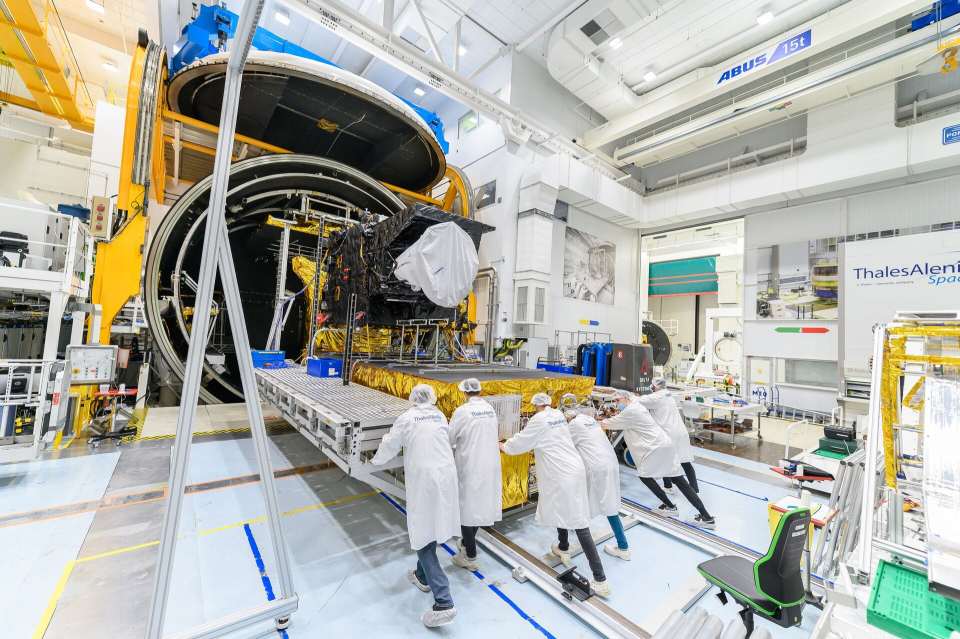Publié le 23 mars 2022
Following on from the success of the first and second generation of Meteosat satellites, the Meteosat Third Generation (MTG) will soon take over the reins to ensure the continuity of data for weather forecasting, from geostationary orbit, for the next two decades.
This new generation of weather satellite will offer a significant enhancement of the current imager capabilities provided by the Meteosat Second Generation (MSG), a real-time lightning imaging capability and an all-new infrared sounding capability providing early detection of the development of severe storms.

MTG-I pushed into the thermal vacuum chamber.
Click here to view the image at full resolution.
The MTG mission comprises two types of satellite: four MTG-Imagers and two MTG-Sounders.
With the first MTG-I, MTG-I1, scheduled for launch at the end of the year, it’s full steam ahead getting it ready for liftoff and its life in orbit 36 000 km above Earth.
Last November, the satellite was placed in the large thermal vacuum chamber at Thales Alenia Space’s facilities in Cannes, France. Following initial checkout tests, it underwent a punishing five-week campaign during which, under hard vacuum conditions, it was exposed to the extreme of temperatures it will face in orbit.
MTG-I1 passed the tests with flying colours, with all modes of the satellite exercised faultlessly at both cold and hot operating plateaux. It also survived ‘switch on’ from cold non-operating conditions.
After removal from the chamber alignment tests confirmed that no detectable impact on instrument alignments had taken place and the satellite was then prepared for a suite of mechanical tests, which have now also been completed.
Read the rest of the article
over on the ESA Observing the Earth website